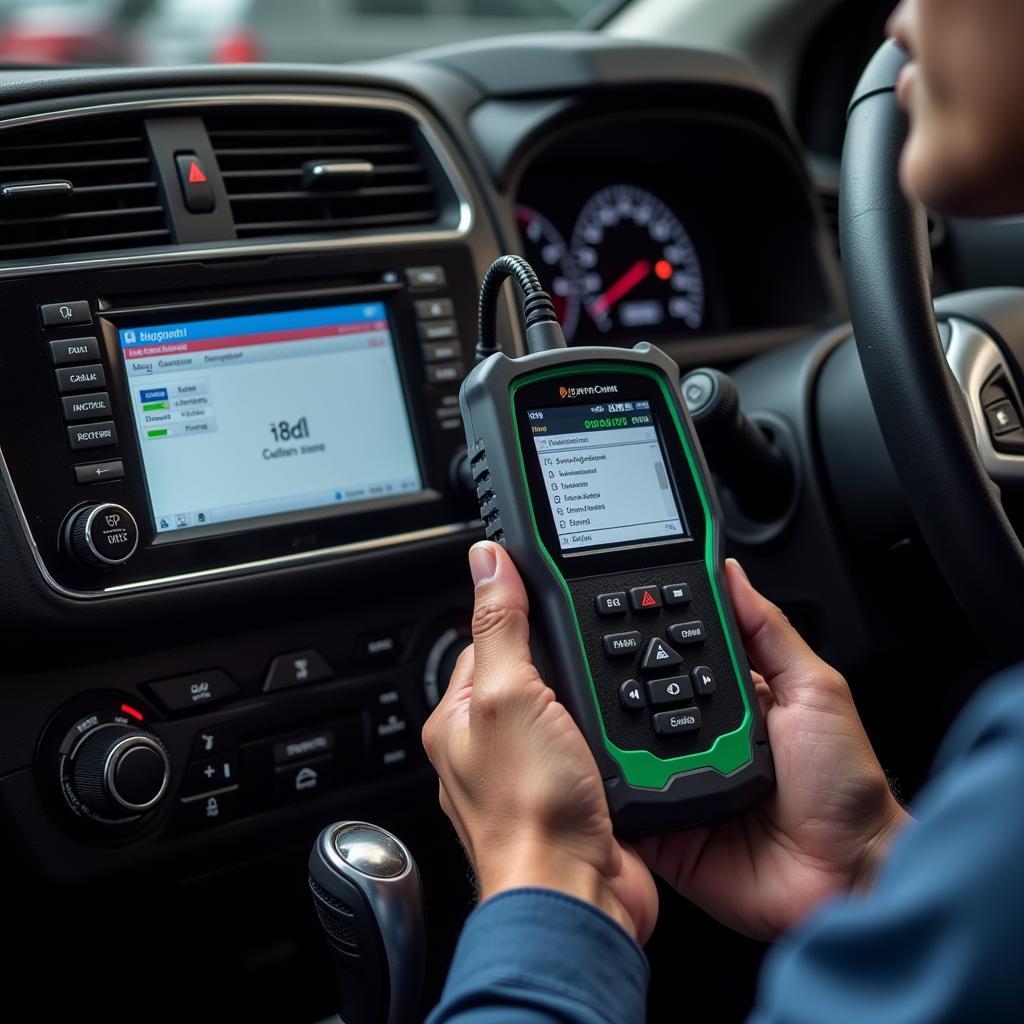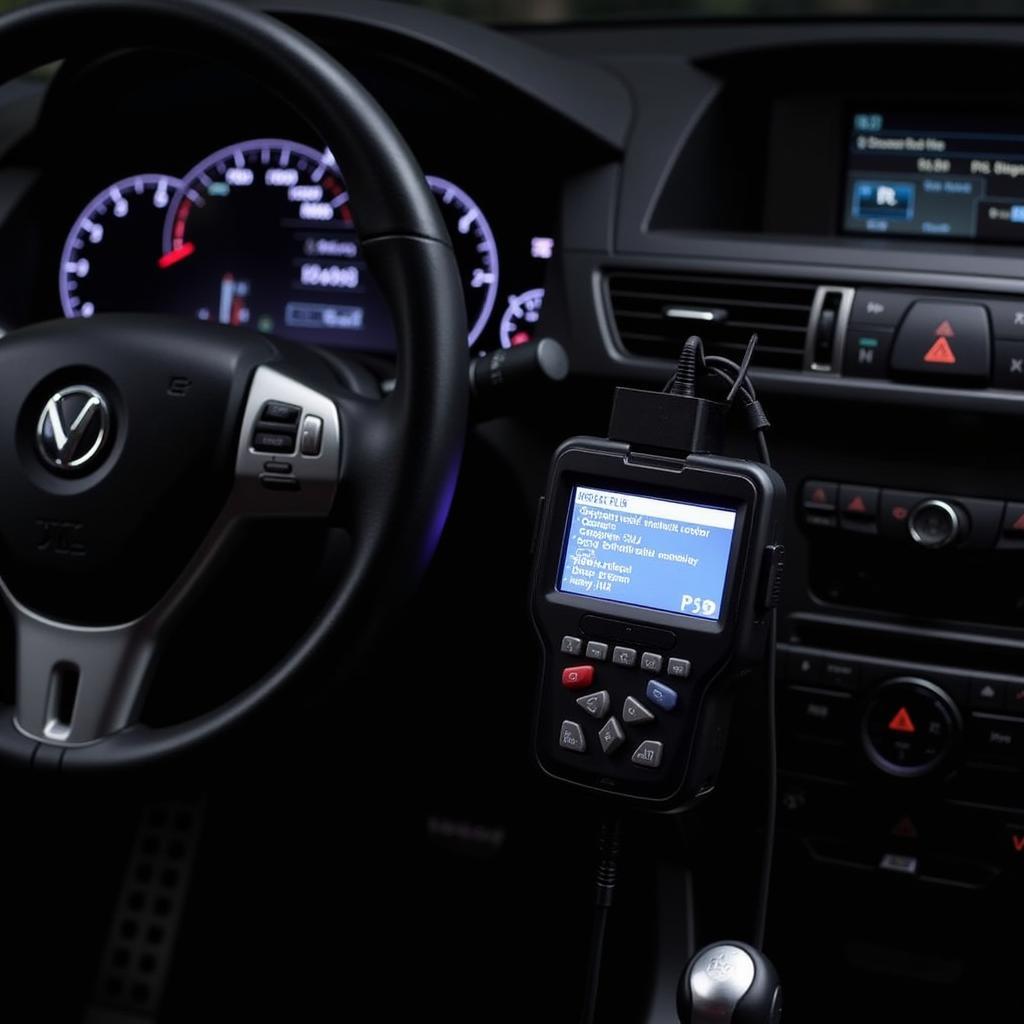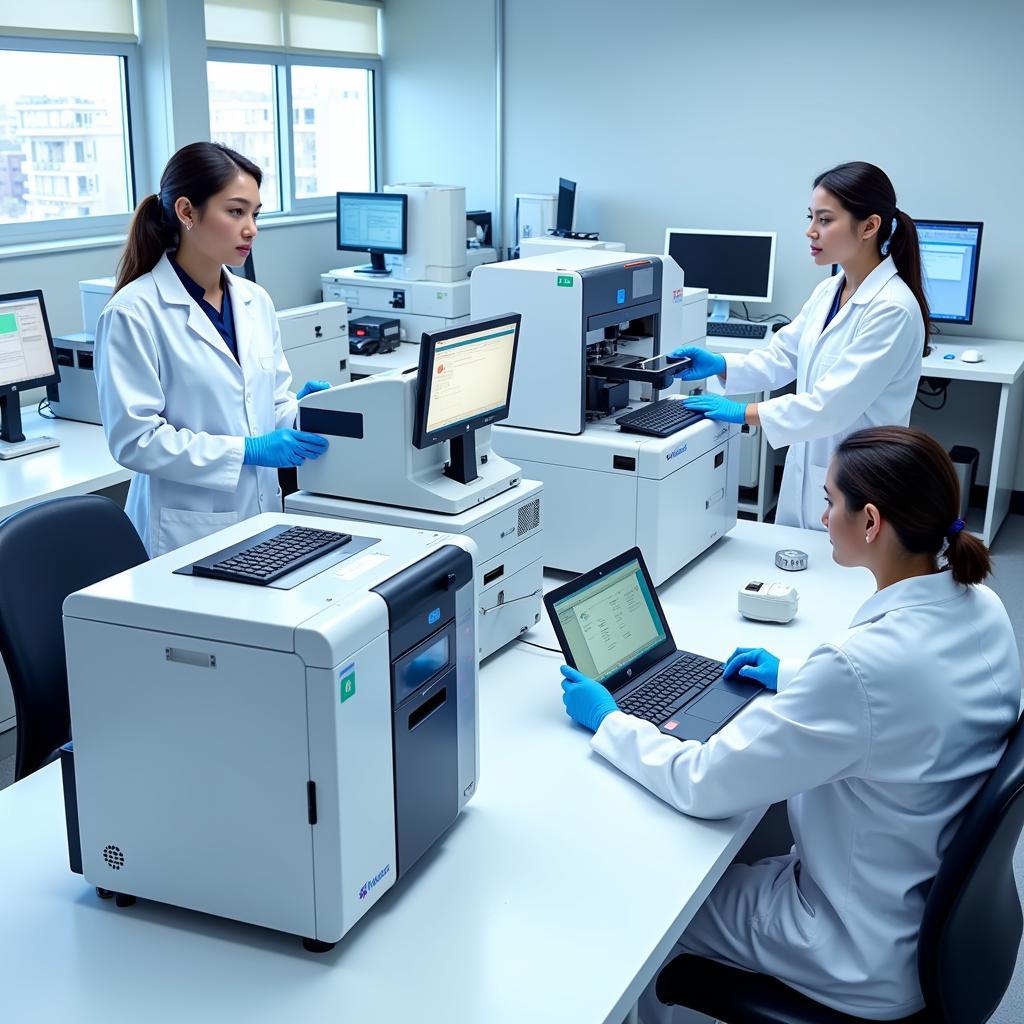OBDII diagnostic car scanners & reader tools have become essential for car owners, mechanics, and DIY enthusiasts. These handy devices provide a window into your vehicle’s computer system, allowing you to diagnose and potentially fix issues without stepping foot in a repair shop. This comprehensive guide delves into the world of OBDII scanners, covering everything from understanding their capabilities to choosing the right one for your needs.
What is an OBDII Diagnostic Car Scanner & Reader Tool?
An OBDII (On-Board Diagnostics II) scanner is an electronic device that connects to your car’s OBDII port, typically located under the dashboard on the driver’s side. This port allows access to the vehicle’s ECU (Engine Control Unit), which stores diagnostic trouble codes (DTCs) and real-time data from various sensors.
By reading these codes and data, an OBDII scanner can reveal a wealth of information about your car’s health, including:
- Engine Performance: Monitor parameters like RPM, speed, coolant temperature, and fuel system status.
- Emissions Systems: Check for faults in the catalytic converter, oxygen sensors, and evaporative emissions system.
- Transmission Performance: Identify issues with gear shifting, clutch operation, or torque converter performance.
- Airbag Systems: Diagnose issues with airbag sensors, deployment modules, or wiring.
- ABS Systems: Troubleshoot problems with the anti-lock braking system, including wheel speed sensors and hydraulic units.
Types of OBDII Scanners
Understanding the different types of OBDII scanners is crucial for selecting the right one. Here’s a breakdown:
1. Basic Code Readers
As the name suggests, these provide basic functionality – reading and clearing DTCs. They are affordable and suitable for casual car owners who want to check engine lights or perform simple diagnostics.
2. Advanced Code Readers
These offer additional features beyond basic code reading. Some models may include:
- Live data streaming: View real-time sensor readings to monitor engine performance and identify potential issues.
- Freeze frame data: Access a snapshot of the engine’s parameters at the time a fault code was stored.
- Smog check readiness: Determine if your vehicle is ready to pass an emissions test.
3. Professional-Grade Scan Tools
These are comprehensive diagnostic tools used by professional mechanics. They offer a wide range of advanced features, including:
- Bi-directional control: Interact with and control vehicle systems for testing and diagnostics.
- Programming and coding: Modify vehicle settings, such as key fob programming or injector coding.
- Advanced diagnostic functions: Access manufacturer-specific codes and perform complex troubleshooting procedures.
 professional obd2 scanner in use
professional obd2 scanner in use
Choosing the Right OBDII Scanner
With numerous options available, choosing the right OBDII scanner can be overwhelming. Consider these factors:
- Your Needs: Determine what you want to achieve with the scanner. Basic code reading might suffice for casual users, while professionals require advanced features.
- Vehicle Compatibility: Ensure the scanner supports your vehicle’s make, model, and year. Some scanners are specialized for specific car brands.
- Budget: Prices range from affordable basic readers to expensive professional tools. Determine your budget and explore options within that range.
- Features: Consider the features you require, such as live data, bi-directional control, or manufacturer-specific diagnostics.
- User Friendliness: Opt for a scanner with an intuitive interface, clear display, and easy-to-use software.
“The right OBDII scanner can empower you to take control of your vehicle’s maintenance,” says John Miller, a veteran automotive engineer at ScanToolUS. “Understanding your car’s health has never been easier.”
Using an OBDII Diagnostic Car Scanner & Reader Tool
While the specific steps may vary depending on the scanner model, here’s a general guide on using an OBDII scanner:
- Locate the OBDII port: It’s usually found under the dashboard on the driver’s side.
- Connect the scanner: Plug the scanner into the OBDII port.
- Turn on the ignition: Turn the key to the “on” position without starting the engine.
- Read the codes: Follow the scanner’s instructions to access and read the stored DTCs.
- Interpret the codes: Look up the code definitions in the scanner’s manual or online.
- Clear the codes: After addressing the underlying issue, use the scanner to clear the codes.
- Recheck for codes: After driving for a while, recheck for codes to ensure the problem is resolved.
 car diagnostic with obd2 scanner
car diagnostic with obd2 scanner
Benefits of Using an OBDII Scanner
Using an OBDII scanner offers numerous benefits:
- Save Money: Diagnose and potentially fix minor issues yourself, avoiding expensive mechanic visits.
- Early Detection: Identify problems early on, preventing them from escalating into major repairs.
- Improved Fuel Efficiency: Monitor fuel system parameters and identify issues that could be affecting fuel economy.
- Enhanced Understanding: Gain a deeper understanding of your vehicle’s inner workings and overall health.
- Peace of Mind: Enjoy peace of mind knowing you can quickly check your car for potential problems.
OBDII Scanners: Essential Tools for the Modern Car Owner
OBDII diagnostic car scanners & reader tools have revolutionized how car owners and mechanics diagnose and repair vehicles. From basic code readers to professional-grade tools, there’s an OBDII scanner for every need and budget. By understanding the different types, features, and benefits, you can make an informed decision and choose the right scanner to keep your car running smoothly.
For expert advice on selecting the perfect OBDII scanner for your needs, contact ScanToolUS at +1 (641) 206-8880 or visit our office at 1615 S Laramie Ave, Cicero, IL 60804, USA.
FAQs
1. Can I use any OBDII scanner on my car?
Not necessarily. Ensure the scanner is compatible with your car’s make, model, and year.
2. What does it mean if my check engine light is flashing?
A flashing check engine light usually indicates a serious problem requiring immediate attention.
3. Can I clear OBDII codes myself?
Yes, most OBDII scanners allow you to clear codes. However, it’s crucial to address the underlying issue before clearing them.
4. Do I need a professional-grade scanner?
Professional-grade scanners are generally unnecessary for casual users. Basic or advanced readers suffice for most DIY diagnostics.
5. Where can I find the OBDII code definitions?
Code definitions are usually available in the scanner’s manual or online.


